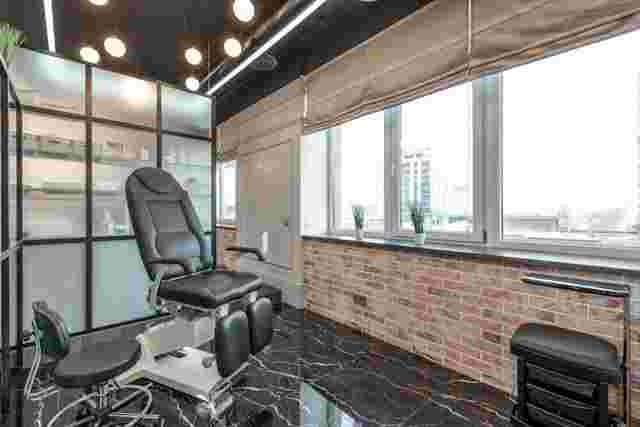A well-chosen pedicure chair can be the centerpiece of any nail service setup—but what if you could deliver exceptional results without the traditional foot soak? Dry pedicures, also known as waterless pedicures, are reshaping the salon experience for both clients and technicians. They offer enhanced hygiene, faster service times, and adaptability for spaces where plumbing or large foot baths aren’t practical. For small salons, mobile nail technicians, or multi-purpose spaces, this approach combines modern efficiency with client comfort.
What Is a Dry Pedicure?
A dry pedicure is a nail and foot care service performed without soaking the feet in water. Instead, the treatment focuses on exfoliation, nail care, and skin smoothing using professional tools, creams, and wraps. The absence of water makes it ideal for salons looking to:
-
Save space by eliminating bulky foot baths.
-
Improve sanitation protocols.
-
Reduce service time without sacrificing quality.
Why Salons Are Turning to Dry Pedicures
1. Space Optimization
Small or multi-use salons often struggle to accommodate large pedicure stations with built-in plumbing. Dry pedicure setups require significantly less room, freeing up valuable floor space for other services.
2. Enhanced Hygiene
Water can harbor bacteria if basins are not meticulously cleaned after every client. Removing water from the process eliminates this concern, making sanitation faster and easier.
3. Time Efficiency
Skipping the soak shortens service times, allowing more appointments per day. Both busy clients and salon revenue gain from this.
The Role of the Pedicure Chair in a Dry Pedicure Setup
Even without a foot soak, the pedicure chair remains essential for client comfort and technician efficiency. Here’s how to optimize it for dry services:
-
Adjustable Height and Recline: Helps the technician maintain ergonomic posture.
-
Footrest Support: Crucial for stabilizing the client’s foot during filing, buffing, and cuticle work.
-
Compact Size: Ideal for small salon spaces or mobile setups.
-
Durable Upholstery: Resistant to creams, lotions, and disinfectants.
A well-designed pedicure chair in a dry pedicure station ensures the service feels just as luxurious as a traditional water-based treatment.
How a Dry Pedicure Works: Step-by-Step
Step 1: Consultation and Sanitization
The technician discusses the client’s needs and ensures both the chair and tools are sanitized before service.
Step 2: Nail Shaping and Cuticle Care
Without water, cuticles are softened using creams or cuticle remover solutions, then gently pushed back and trimmed.
Step 3: Exfoliation
Dead skin and calluses are removed using foot files, pumice stones, or specialized dry exfoliating tools.
Step 4: Moisturizing and Wrapping
A rich foot cream or mask is applied, sometimes with warm towels or heated booties for deeper absorption.
Step 5: Polish or Finish
Nails are painted or buffed to a natural shine, completing the treatment.
Benefits for Clients
Health and Safety
Without standing water, the risk of fungal or bacterial infection drops dramatically. This makes dry pedicures appealing for clients with medical concerns or sensitive skin.
Longer-Lasting Polish
Since nails aren’t soaked, they stay dry and porous, helping polish adhere better and last longer.
Year-Round Comfort
In colder climates, skipping the water soak prevents discomfort from dipping feet into cool water during winter.
Benefits for Salon Owners and Technicians
Lower Overhead Costs
No plumbing installation or maintenance means significant savings for new or expanding salons.
Flexibility for Mobile Services
A dry pedicure setup can be easily transported, enabling nail professionals to offer home visits or event services.
Quicker Turnaround
The reduced service time can boost appointment capacity, increasing profitability without compromising service quality.
Designing a Dry Pedicure Station
Choosing the Right Chair
Select a pedicure chair with compact dimensions, supportive cushioning, and adjustable features. Ensure it’s easy to sanitize between clients.
Tool and Product Organization
Since there’s no foot bath, focus on arranging exfoliating tools, nail implements, and skincare products within arm’s reach.
Lighting
For precise work, particularly for meticulous cuticle care and polish application, good lighting is crucial.
Dry Pedicure vs. Traditional Pedicure: Key Differences
| Feature | Dry Pedicure | Traditional Pedicure |
|---|---|---|
| Water Usage | None | Foot soak required |
| Space Requirements | Minimal | Larger station with basin |
| Hygiene | High, minimal waterborne risk | Requires strict cleaning |
| Service Time | Shorter | Longer |
| Equipment Cost | Lower (no plumbing) | Higher (installation) |
Common Myths About Dry Pedicures
"They’re Less Relaxing"
With the right pedicure chair, soothing music, and warm towel wraps, the experience can be just as indulgent—if not more.
"They Don’t Clean the Feet as Well"
Professional exfoliation and moisturization techniques ensure feet are thoroughly refreshed, even without water.
"They’re Only for Small Salons"
While space-saving benefits are clear, many large spas are adding dry pedicure options for efficiency and variety.
The Future of Pedicure Services
Dry pedicures aren’t just a passing trend—they’re a practical evolution in salon services. As more clients prioritize hygiene, efficiency, and sustainability, waterless pedicure setups will likely become a standard offering. They allow salons to adapt to changing expectations while still delivering high-quality, relaxing treatments.
Conclusion
Dry pedicures combine modern hygiene standards, operational efficiency, and client comfort in a space-friendly format. By selecting the right pedicure chair and tools, salons can create a premium experience without the need for water. For beauty professionals exploring innovative service models, this approach offers flexibility and long-term value. At Hair Beauty Network, we champion smart salon solutions that empower professionals to deliver excellence—whether through traditional methods or forward-thinking innovations like the dry pedicure.




